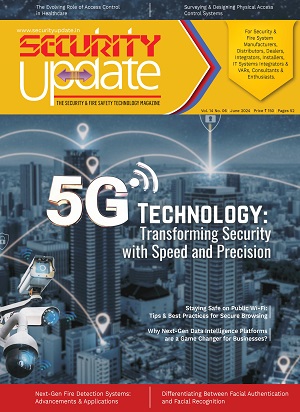
Linn Storäng, Regional Director Northern Europe at Axis Communications, considers the importance of modern network cameras in supporting digital transformation by improving processes and unlocking new possibilities.
Network cameras have revolutionised the physical security industry. When the first network camera was developed many years ago, the full capabilities and potential it afforded could scarcely have been imagined. Yet today, network cameras are utilised across every industry and sector, both indoors and outdoors, in all weathers, with advanced analytics and artificial intelligence (AI) allowing them to perform ever more complex tasks and fully support security teams.
Now, due to their vast potential, cameras, acting as sensors, are being incorporated into tailor-made smart applications that are designed to solve specific industry problems with no related security factor. Not only are businesses able to offer their customers a comprehensive security solution, but also a powerful business intelligence tool, combining camera visuals, analytics and artificial intelligence (AI) to streamline and optimise processes across industry.
As one industry analyst explained: “Video sensors are forming an internet of video things; IoVT platforms are geared to deal with the specialist requirements of video sensors, managing video data and running video analytics.” This widening scope of network camera capability puts the physical security community in an even stronger position as the digital transformation agenda gathers pace.
Industry 4.0 employs interconnectivity and automation to transform manufacturing and industrial businesses based upon real-time data which is used to improve operations and automate many manual or repetitive tasks. As devices connect and communicate with one another, they can increasingly make decisions without human involvement. Technology can enhance and complement people, allowing them to cover a greater number of tasks more quickly, or to carry out tasks requiring a greater degree of skill. Technology takes care of the more repetitive work, usually with considerably more speed and accuracy.
Network cameras can play a key role here, helping to vastly improve operations within the industrial environment. Cameras mounted above manual assembly production lines, for example, can monitor processes and procedures to ensure greater accuracy and efficiency of operations.
Remote maintenance capabilities mean that, if an error is detected in the video data, a production line can be automatically stopped, analysed, corrected and restarted before the knock-on effects are felt further down the line. Such monitoring can even extend to ensuring health and safety requirements are met by staff, or that productivity levels are as expected by management.
Barriers to integration are being steadily overcome. In many areas, systems working in a siloed manner are increasingly being brought together to form part of a much larger and more fully integrated solution. The data centre environment provides a good example. Here, sensors relating to security are often separate to the Data Centre Infrastructure Management (DCIM) system that monitors operational aspects. By bringing the two together, data from network cameras can be integrated with the DCIM and displayed as visual-overlay images, providing teams with site-wide information from an array of devices and sensors, backed with visual confirmation.
Another key area in which we can expect to see huge growth in regard to the integration of network cameras and operational technologies is the smart city. Technology is the beating heart of the connected metropolis, with devices and sensors, and the data they collect, delivering benefits not only for security, but also all manner of city-related operations.
Compared to a lot of IoT sensors, network cameras cover a wide area of vision and one camera can collect metadata on a huge number of different parameters; this might include efficiencies in traffic management, the frequency of public transport, or even controlling lighting and heating within public buildings based on usage data.
As we look to better harness the potential of machines to boost productivity and efficiency, we should also point to the benefits of a leaner use of resources and less waste. Deploying a network camera system that is designed for optimal power consumption is better for the environment and will ultimately represent cost savings to the businesses from an energy point of view.
For example, the use of software applications and edge processing preserves only the important forensic detail which means that only relevant video data is passed back through the cloud for storage or wider analysis saving on bandwidth and energy by an average of 50%. In addition, the use of reusable and recyclable materials in the manufacturing of security products supports a greener business agenda and creates value within the enterprise in line with in an ESG (environmental, social, and corporate governance) framework.
In the digital age, network cameras used as sensors for their ability to collect and process data, will have a key role to play in supporting digital transformation. The ability to help multiple industries through new and varied applications of surveillance technology opens a whole new world of possibility for the physical security professional who is eager to develop strong partner and customer relationships within new markets. High-quality, robust and cutting-edge solutions are unlocking a smarter, more connected and more efficient world for modern industry.












